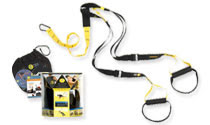
Most student-athletes and their family will let the college coach dominate the interview process. The students and their parents should begin to control the process by asking the right questions and understand the coach is making hundreds of calls to other prospects, so find out quickly if there is interest on both sides.
Below are the top 10 questions the student-athlete should ask any college coach or one of their staff members during the one-on-one interview before making a commitment:
1. Based on what you know now, what are my earliest opportunities at playing my position?
2. How many athletes are you recruiting that play my position?
3. How many strong undergraduates are ready to move into the position I play?
4. Do you intend to play me at another position than what I played in high school?
5. What allowances are made for class and exam preparation?
6. Does the athletic program have an off-season schedule?
7. What is the breakdown of the staff, coaches, and their specialties and who will I be working with if I decide to commit to play for your college?
8. If I am offered a partial scholarship, what do I need to do to get a full scholarship?
9. How much money is a typical athletic scholarship worth?
10. If I get hurt, and cannot play anymore, what provisions are available for me in order to keep my scholarship?
The college coach’s main intent is to get the student-athlete to commit, it is very important you ask the right questions so both parties have a clear understand as well as a comfort level before moving to the next step.
Scholarpreps.com






